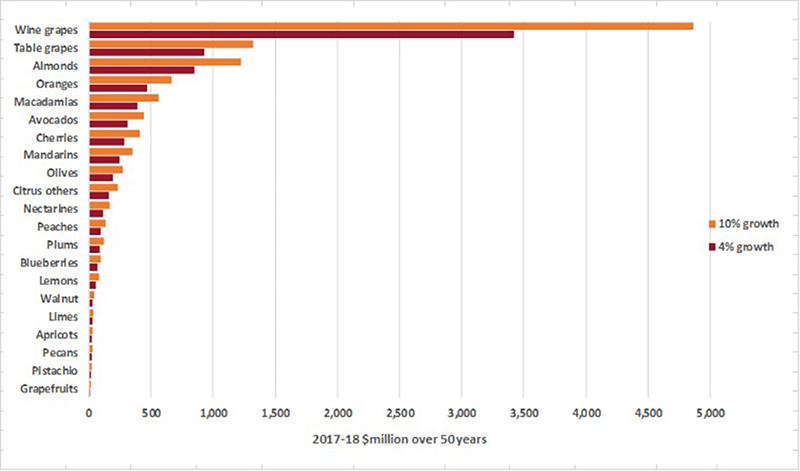Authors: Ahmed Hafi, Donkor Addai, Jay Gomboso, Lucy Randall and Zoltan Lukacs
Overview
Xylella is one of the world's most devastating plant pests and Australia's number one priority plant pest. It is a bacterium, primarily transmitted by insect hosts, that results in yield losses and plant deaths. Following its appearance in Europe, the Australian Government introduced emergency measures to reduce the likelihood of entry of X. fastidiosa in 2015. It also introduced post-border measures to prepare Australia in the event the pathogen and its vectors enter the country.
This report estimates the economic and environmental impacts of 4 subspecies of Xylella fastidiosa (X. fastidiosa) entering and establishing in Australia. The direct economic costs to 21 susceptible crops are estimated and the potential flow-on impacts on sectors dependent on their production are assessed qualitatively. The impacts on the nursery industry and the environment are also described.
The quantitative estimates of the potential costs to the cropping industry have been calculated over 50 years with a discount rate of 3%. For any subsequent assessments of projects to mitigate the risk of Xylella it will be important to consider uncertainties around whether Xylella will enter and the effectiveness of mitigation projects.
Key Findings
Figure 1 Cost of X. fastidiosa, by crop and spread rate over 50 years if all susceptible crops are affected a
Note: All dollar values are present values estimated using a 3% discount rate.
- An incursion of Xylella fastidiosa could cost the Australia horticultural industries between $1.2 billion and $11.1 billion in 2017–18 dollars (over 50 years at a 3% discount rate), depending on the severity of the incursion and its rate of spread.
- Significant flow-on effects to primary processing sectors are likely due to the dependence of these sectors on domestic production.
- An incursion would also affect the nursery industry through damage to plants and from increased compliance costs associated with disease management. Environmental impacts are likely but uncertain in scope and significance.

